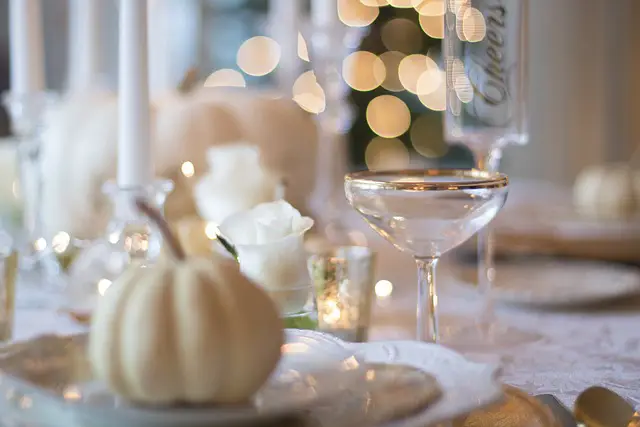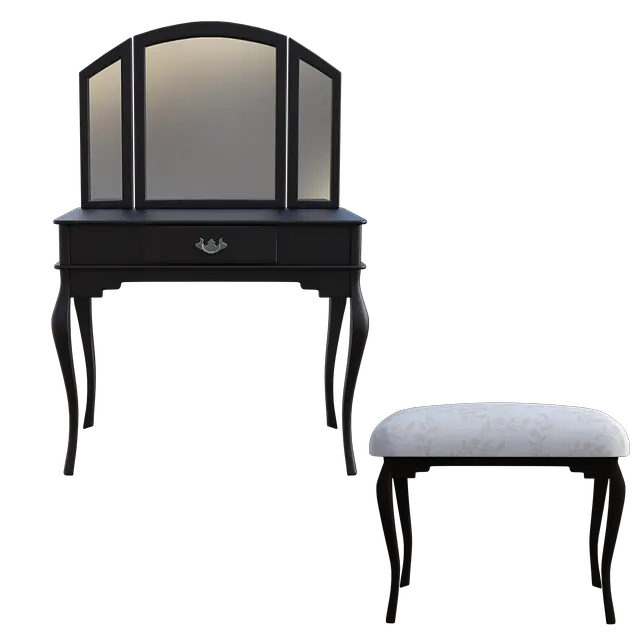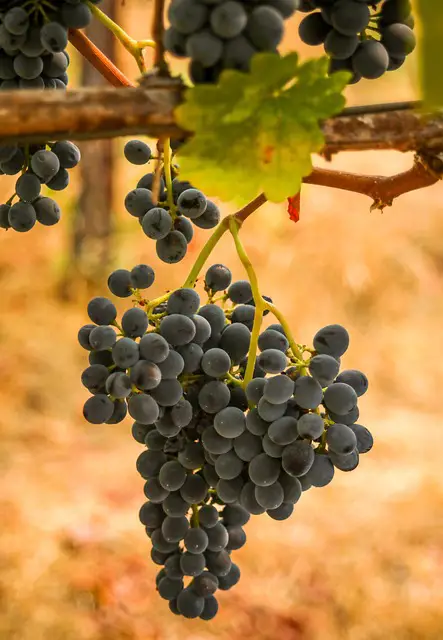Are you ready to elevate your wine game and impress your guests with your sommelier-like skills? Look no further because we’re here to unlock the secrets of serving Sauvignon Blanc like a true wine connoisseur. Whether you’re a seasoned vino enthusiast or new to the world of this crisp and refreshing white wine varietal, our comprehensive guide will equip you with all the knowledge and techniques you need to serve Sauvignon Blanc with confidence and finesse. So, grab a glass, and let’s embark on a journey that will take your tasting experience to new heights.
Obsah
- Choosing the Right Glassware for Sauvignon Blanc
- Optimal Serving Temperature for Sauvignon Blanc
- Decanting Sauvignon Blanc: A Step-by-Step Guide
- Understanding Sauvignon Blanc Labels: Region and Vintage
- The Art of Pouring Sauvignon Blanc
- Temperature Matters:
- Choose the Right Glassware:
- Pouring Technique:
- Pairing Sauvignon Blanc with Food: Unveiling Flavour Combinations
- Storing Sauvignon Blanc: Tips for Longevity
- Exploring Sauvignon Blanc Varietal Characteristics
Choosing the Right Glassware for Sauvignon Blanc
When it comes to serving Sauvignon Blanc, having the right glassware can make all the difference in enhancing your wine-drinking experience. The shape and size of the glass can greatly impact the aroma, taste, and overall enjoyment of this popular white wine varietal. Here are some key factors to consider when choosing the perfect glassware for your Sauvignon Blanc:
Glass Shape: Opt for a glass with a tall, narrow bowl and a slight taper towards the rim. This shape helps concentrate the vibrant aromas of Sauvignon Blanc, allowing you to fully appreciate its characteristic notes of citrus, green apple, and tropical fruits. Avoid wider bowls as they may dilute the aromatic intensity.
Glass Size: Choose a wine glass that is moderate in size, allowing ample room for swirling and releasing the wine’s bouquet. It should comfortably hold around 10-14 ounces, leaving space for the aromas to circulate and intensify. A larger glass would disperse the aromatics too quickly, while a smaller glass wouldn’t allow the wine to breathe adequately.
- Glass Material: Opt for clear, thin, and elegant crystal glassware. Crystal not only showcases the wine’s beautiful color but also provides excellent transparency, allowing you to fully appreciate the wine’s clarity and vibrancy.
- Stemmed vs Stemless: Although stemmed and stemless glasses are a matter of personal preference, it’s recommended to choose a stemmed glass for Sauvignon Blanc. The stem not only adds an element of elegance but also provides a practical solution to hold the glass without warming the wine with your hand. The absence of a stem in stemless glasses may cause the wine to warm up quickly and affect its flavor profile.
- Quality Matters: Invest in high-quality glassware that is specifically designed for white wines such as Sauvignon Blanc. Well-crafted glassware enhances your wine experience by delivering the wine to your senses just as the winemaker intended.
By considering these factors, you can ensure that your next glass of Sauvignon Blanc is perfectly presented, allowing you to savor every delightful sip of this refreshing and aromatic wine.

Optimal Serving Temperature for Sauvignon Blanc
When it comes to enjoying a glass of Sauvignon Blanc, the temperature at which it is served can greatly enhance your tasting experience. This crisp and refreshing white wine has unique characteristics that truly shine when served at the optimal temperature. Here’s everything you need to know to ensure your Sauvignon Blanc is served at its very best:
1. Chilling Temperature: The ideal serving temperature for Sauvignon Blanc is between 45°F (7°C) and 50°F (10°C). Keeping your wine within this temperature range allows the flavors and aromas to fully develop, while ensuring a refreshing and balanced taste.
2. Refrigeration Time: To achieve the perfect serving temperature, it is recommended to refrigerate your bottle of Sauvignon Blanc for at least 1-2 hours before consumption. This will allow the wine to gradually cool down without being overly chilled, preserving its delicate nuances.
When serving Sauvignon Blanc, remember that if the wine is too warm, it may taste dull and lose its vibrant acidity. On the other hand, overly chilling it can mask the aromatic flavors and nuances. Take these serving temperature guidelines into consideration to enjoy every sip of Sauvignon Blanc just as the winemakers intended.

Decanting Sauvignon Blanc: A Step-by-Step Guide
Sauvignon Blanc is a delightful white wine known for its crispness and bright fruit flavors. To fully experience the true potential of this wine, decanting can greatly enhance its aromas and flavors. Here is a step-by-step guide to help you decant your Sauvignon Blanc like a pro.
Step 1: Choose the Right Decanter
- Opt for a decanter with a wide base and a narrow neck. This shape allows for better aeration and helps release the wine’s aromas.
- Ensure the decanter is clean and free from any residual odors that could affect the taste of your wine.
Step 2: Open the Bottle and Pour
- Gently remove the foil or cap from the bottle, taking care not to disturb any sediments.
- Hold the neck of the bottle and pour the Sauvignon Blanc into the decanter, allowing a smooth, steady flow.
Understanding Sauvignon Blanc Labels: Region and Vintage
When it comes to discovering the world of Sauvignon Blanc, understanding the importance of region and vintage can greatly enhance your wine tasting experience. The region where the grapes are grown plays a significant role in the overall characteristics and flavors of the wine. Sauvignon Blanc is grown in various regions around the world, each providing a unique expression of this popular white wine. Some renowned regions for Sauvignon Blanc include:
- Marlborough, New Zealand: Known for its vibrant and zesty style, Sauvignon Blanc from Marlborough boasts strong tropical and citrus fruit notes with high acidity.
- Loire Valley, France: Considered the birthplace of Sauvignon Blanc, Loire Valley produces elegant and mineral-driven wines with high acidity and subtle herbaceous flavors.
- Napa Valley, California: Sauvignon Blanc from Napa Valley tends to exhibit richness and ripe fruit flavors, often complemented by subtle oak influence.
Equally important to consider is the vintage, which refers to the year in which the grapes were harvested. The vintage can greatly affect the style and quality of Sauvignon Blanc. In cooler years, the wine may showcase vibrant acidity and fresh fruit flavors, while warmer years may result in riper, more tropical characteristics. It’s worth noting that Sauvignon Blanc is typically enjoyed in its youth, as it is known for its bright and refreshing nature. However, certain vintages can develop beautifully with age, showcasing additional complexity and tertiary flavors.
The Art of Pouring Sauvignon Blanc
When it comes to pouring Sauvignon Blanc, there are a few tips and techniques that can elevate your wine experience to a whole new level. With its vibrant flavors and refreshing acidity, this white wine varietal deserves to be poured with care and finesse. Here are some guidelines to help you master :
Temperature Matters:
Ensure your Sauvignon Blanc is chilled to the ideal temperature of around 45-50°F (7-10°C) before pouring. This ensures that the wine’s aromas and flavors are preserved and enhanced. Avoid serving it too cold, as extremely low temperatures can dampen its aromatics and make it taste flat.
Choose the Right Glassware:
Select a glass that allows the wine to aerate and develop its aromas. Opt for a tulip-shaped glass with a slightly narrower opening. This shape helps concentrate the wine’s vibrant aromatics, while the narrower mouth directs the aromas towards your nose, enhancing the sensory experience.
Pouring Technique:
- Hold the glass by the stem to avoid heating the wine with your hands and to showcase its beautiful color.
- Tilt the glass at a 45-degree angle and pour the wine slowly down the side of the glass, allowing it to gently glide and settle.
- Avoid overfilling the glass, leaving enough space to swirl the wine and release its enticing bouquet.
Following these tips will not only ensure you enjoy the full expression of a well-poured Sauvignon Blanc but also elevate your appreciation for this exquisite wine variety. Remember, each glass poured with precision is an invitation to savor the delicate nuances and complexities of this beloved varietal.
Pairing Sauvignon Blanc with Food: Unveiling Flavour Combinations
When it comes to experiencing the full potential of Sauvignon Blanc, the right food pairing can make all the difference. This versatile and vibrant white wine not only boasts refreshing acidity and distinct herbaceous notes, but it also has the ability to complement a wide range of flavors. To help you unlock the perfect match, here are some exciting flavor combinations that will take your Sauvignon Blanc tasting experience to new heights:
1. Fresh Seafood: The crispness and zesty acidity of Sauvignon Blanc work wonders when paired with fresh seafood dishes. The wine’s citrus and green apple flavors beautifully enhance the natural sweetness of delicate fish, such as grilled sea bass or seared scallops. For an additional burst of flavor, try adding a squeeze of lemon or a sprinkle of fresh herbs like cilantro or parsley.
2. Goat Cheese and Vegetables: Sauvignon Blanc’s herbaceous character and lively acidity create a delightful harmony with creamy goat cheese and a variety of vegetables. The wine’s grassy undertones complement the earthiness of roasted bell peppers, grilled asparagus, or sautéed zucchini. Consider serving a refreshing summer salad topped with crumbled goat cheese and drizzled with a light vinaigrette for a refreshing and vibrant pairing.
Storing Sauvignon Blanc: Tips for Longevity
When it comes to preserving the delicate flavors and aromas of Sauvignon Blanc, proper storage is key. Follow these expert tips to ensure your favorite white wine stays fresh and vibrant for longer:
- Temperature: Maintain a consistent temperature of around 45°F to 55°F (7°C to 13°C) throughout the storage period. Fluctuations in temperature can negatively impact the quality of your wine.
- Light Exposure: Shield your Sauvignon Blanc from direct sunlight and bright indoor lighting. Ultraviolet rays can cause premature aging and spoil the delicate flavors.
- Humidity: Store your bottles in a humid environment to prevent the corks from drying out. Aim for a humidity level of 70% to keep the corks in optimal condition.
- Horizontal Position: Lay your Sauvignon Blanc bottles horizontally to ensure the wine stays in contact with the cork, preventing it from drying out and allowing unwanted oxygen to enter the bottle.
Remember, the storage conditions can significantly influence the aging process, so it’s important to opt for a cool, dark, and humidity-controlled environment. By following these simple guidelines, you can maximize the longevity of your Sauvignon Blanc and savor its delightful flavors for years to come.
Exploring Sauvignon Blanc Varietal Characteristics
Sauvignon Blanc, one of the most popular white wine varietals, offers a wide range of unique characteristics that make it a favorite among wine enthusiasts. This versatile grape varietal originated in the Bordeaux region of France but has since gained global recognition for its distinct flavors and aromas.
When it comes to taste, Sauvignon Blanc is known for its zesty acidity, which lends to its refreshing and crisp nature. Its flavor profile showcases a combination of citrus fruits like grapefruit, lemon, and lime, as well as notes of tropical fruits such as passion fruit and pineapple. These vibrant flavors are often accompanied by herbaceous undertones, including freshly cut grass, bell pepper, and even a hint of floral essence.
Sauvignon Blanc also displays a wide array of aromatic characteristics that contribute to its allure. Its expressive and intense aromas range from striking notes of grapefruit and gooseberry to more herbaceous scents like boxwood and freshly crushed herbs. The wine’s aroma is often described as exhilarating and can transport you to a summer garden filled with bright blossoms and fruity trees.
Another distinguishing quality of Sauvignon Blanc is its versatility. Due to its acidity and aromatic nature, this wine varietal pairs exceptionally well with a variety of cuisines. It is an excellent choice to accompany fresh seafood dishes, particularly shellfish like oysters and shrimp. Additionally, its lively acidity makes it a great companion to a range of cheeses, particularly goat cheese, which harmonizes beautifully with its herbaceous and crisp characteristics.
In conclusion, by following these tips, you can confidently serve Sauvignon Blanc like a true wine connoisseur. Cheers to enhancing your wine tasting experience!






